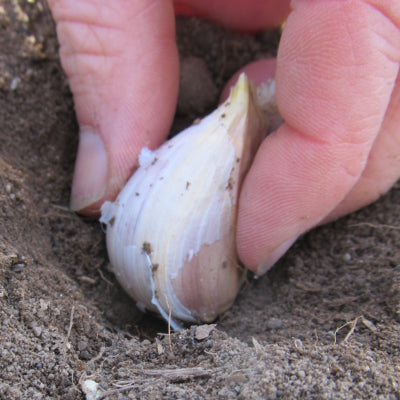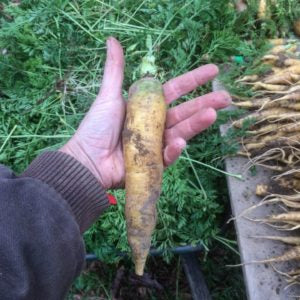Although the first day of autumn isn't until September, August is the first month we associate with fall. We can feel the season culminating, see everything ripening, maturing, and finishing up. It's also the month when we really start thinking about harvesting and planning for winter and growing seasons to come. In short, there's lots to do! Cinch this season and prepare for the next one with these six essential gardening tasks.
 1. SOWING: August is a great time to sow root crops for fall feasts and winter storage, including beets, carrots, radishes, and turnips. It’s also a perfect time to return to the diversity of greens that prefer cooler weather, such as arugula, lettuce, Asian greens and mustards. Many greens can be sown successively throughout the month, and a new sowing of chard and kale will keep them in your harvest basket through the fall. Here are a few other key categories to plan for:
1. SOWING: August is a great time to sow root crops for fall feasts and winter storage, including beets, carrots, radishes, and turnips. It’s also a perfect time to return to the diversity of greens that prefer cooler weather, such as arugula, lettuce, Asian greens and mustards. Many greens can be sown successively throughout the month, and a new sowing of chard and kale will keep them in your harvest basket through the fall. Here are a few other key categories to plan for:
Cover crops are important to add to your sowing calendar this month. As more beds open up moving closer to fall, sow cover crops to protect bare ground and restore nutrient balance in the soil. Take a look this blog post for an overview of cover crop options for home gardeners.
Garlic can be sown from late August to October, but if you’ve harvested your own recently, save a few of the best heads to replant for next year’s crop.
Fall-planted flower bulbs are typically sown from mid-September to early November. Find somewhere with good drainage and proper sunlight. This year marks our biggest selection ever of bulbs, so take a look--you will thank yourself come spring!
For more end-of-summer sowing opportunities, take a look at Doug’s Summer’s Final Sowings Chart
 2. SEED SAVING: August marks the peak of seed-saving season. Many seed crops will start to ripen at once, so if you plan on saving your own seeds this year, now is the time to set up a cleaning and drying area and brush up on your seed-collecting knowledge. Get started with our Ultimate Seed Saving Compendium and see our seed saving resources and materials for guidance.
2. SEED SAVING: August marks the peak of seed-saving season. Many seed crops will start to ripen at once, so if you plan on saving your own seeds this year, now is the time to set up a cleaning and drying area and brush up on your seed-collecting knowledge. Get started with our Ultimate Seed Saving Compendium and see our seed saving resources and materials for guidance.
3. WEEDING: Cultivated crops aren’t the only ones setting seed now. Many weeds are getting ready to sow a new generation for next year. If you can't tackle all the weeds in your garden right away (who can?), prioritize the ones that are blooming or have formed seed heads. If you do make time for regular weed maintenance, clean up beds with freshly sown seeds or new transplants first. New plantings are much more affected by weeds stealing moisture and nutrients from them than older, established crops.
4. WATERING: August can often be a dry month, which is great for seed saving, but tough on edible crops. Young transplants and new sowings require consistent moisture attention to develop into strong plants, while older plants are more drought tolerant.
5. GUARDING: This is the time of year when Japanese beetles become active in some areas. To learn more about their life-cycle and organic control methods, take a look at our Bug Profile on them, as well as our more comprehensive guide to garden pests. Disease is also common this month, especially among older plants that are nearing the end of their life. Check out our Disease Diagnostic article for tips. And if you're looking for a quick, fool-proof way to protect your crops, give row cover a try.
 6. PRESERVING: This is an ideal month for food preservation. Harvests are bountiful now and with the end of the season not unthinkably far ahead, it’s a good time to start planning your winter diet. Take a look at our article – Preserving the Summer Harvest for Winter – for just a few ideas of many on how to preserve fresh fruits and vegetables to get us through cold garden-less days.
6. PRESERVING: This is an ideal month for food preservation. Harvests are bountiful now and with the end of the season not unthinkably far ahead, it’s a good time to start planning your winter diet. Take a look at our article – Preserving the Summer Harvest for Winter – for just a few ideas of many on how to preserve fresh fruits and vegetables to get us through cold garden-less days.
August can be a bitter-sweet month for gardeners; it's the cross-section of the whole year's reward with the first portents of winter. We hope this to-do list will keep you busy and focused on all the short- and long-term potential of your garden.





